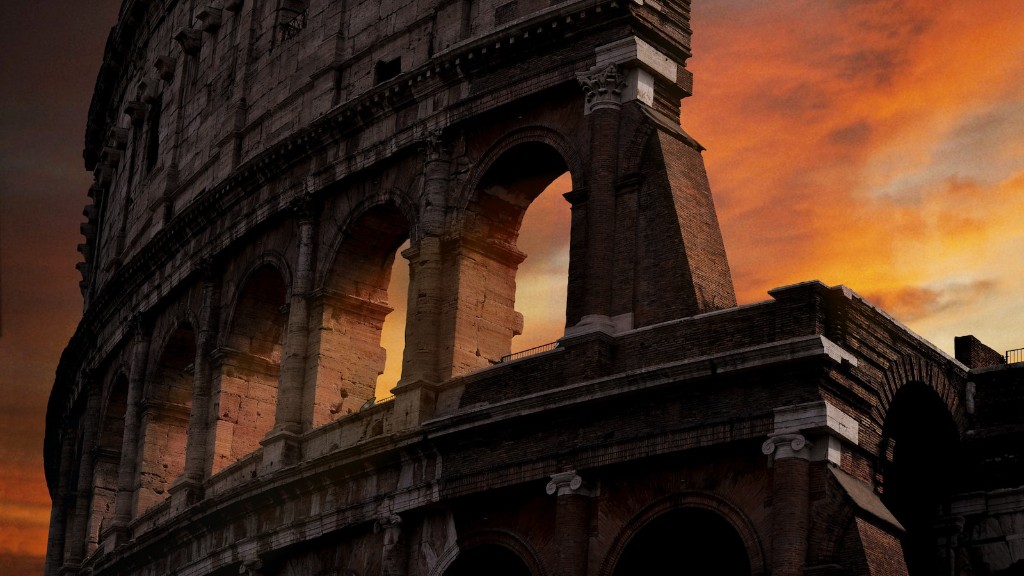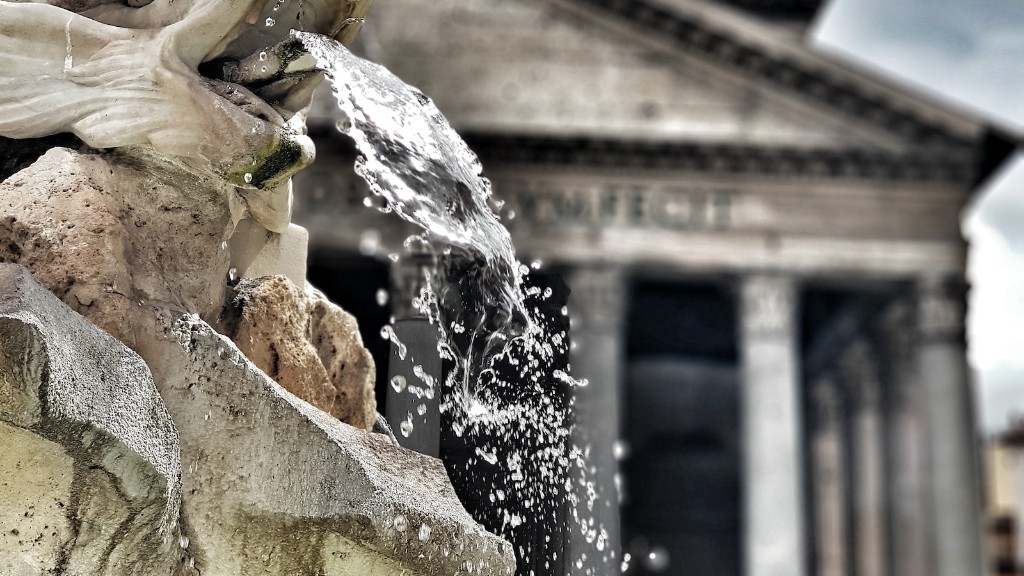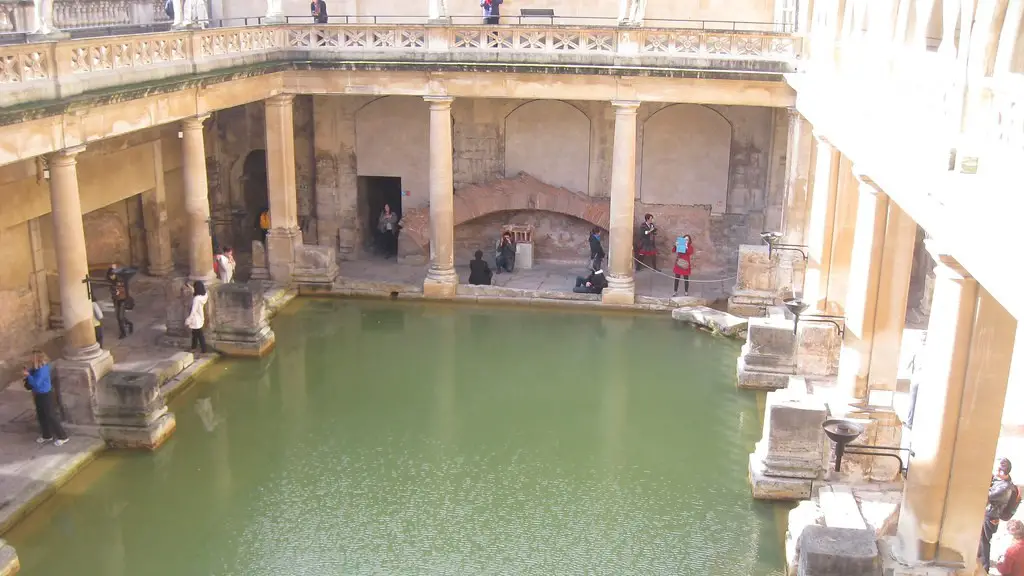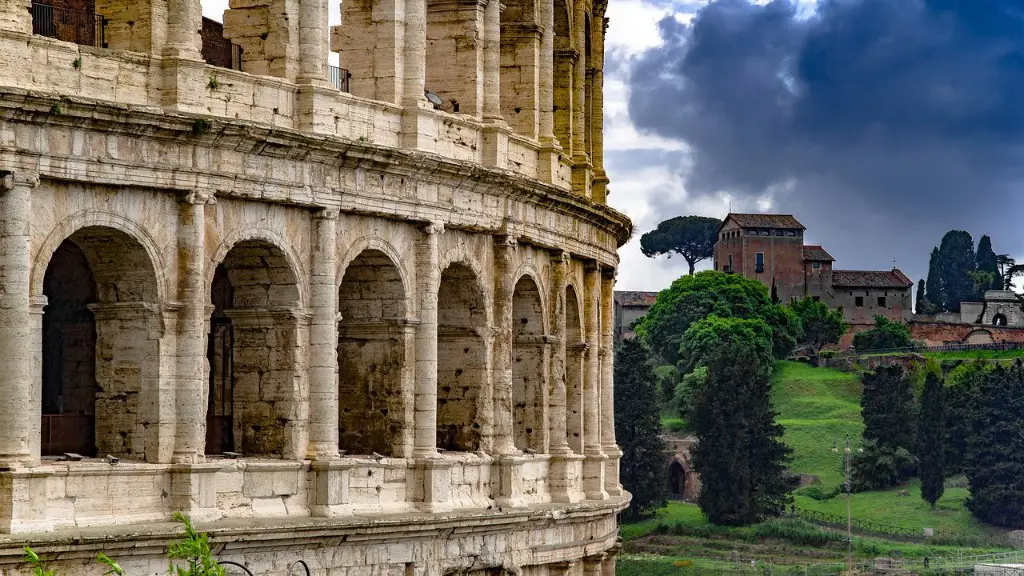Ancient Rome had an extensive social stratification system that divided its populace on the basis of wealth, political power, and religious authority.
The society of Ancient Rome was divided into two classes: the patricians, who were aristocrats and held the majority of wealth and power, and the plebeians, or common people, who comprised the majority of the population. The patricians included prominent families such as the Julii, Cornelii and others, and had some form of hereditary responsibility for providing the infrastructure of Roman society.
The plebeians, however, included laborers, merchants, craftsmen, farmers, priests, and soldiers, and were considered the backbone of Roman society. Although the plebeians did not enjoy the wealth or power of the patricians, they could achieve their goals through political and religious means. For example, plebeians could discount the power of the aristocracy by forming unions, or tribunes, which would allow them to take a stand against any oppressive legislation.
For the most part, however, social stratification ran deep in Ancient Rome. Patricians had the power to make laws, while plebeians were forced to abide by them. Plebeians were also denied the right to hold public office, and had few economic rights.
Despite the rigid societal divisions, the Ancient Romans developed some of the first democratic systems of government. They had an assembly of elected representatives, and they also had a system of checks and balances to prevent power from being abused by the higher classes. The populace also retained certain legal rights that would not be seen in other societies for centuries.
Despite these advances in democracy, the social stratification of Ancient Rome largely remained in place. However, the system did evolve over time as the power of the patricians gradually declined and the rights of the plebeians expanded. As a result, the society of Ancient Rome was far more advanced and egalitarian than many of its contemporaries in the ancient world.
The Social Structure of Ancient Rome
There were four main social groups in Ancient Rome. At the top of the social structure were the patricians, or aristocrats. This class consisted of wealthy families who held the majority of powers, including the right to make laws and rule the government. This class was 1-2% of the population, but held the majority of wealth and power.
The second class was the equites, who held some power but were not as influential as the patricians. This class consisted of wealthy merchants and landowners and was mainly comprised of 10-15% of the population. They had some political influence, but were unable to hold public office.
The third class was the plebeians, or common people. This class made up the majority of the population – around 80-90%. They included laborers, merchants, craftsmen, farmers, and soldiers. Despite their lack of wealth and political power, they were considered the backbone of Roman society and had some influence through the tribunes, which were organizations that allowed plebeians to stand up against oppressive laws.
Finally, there was the slave class. Slaves were the most oppressed and had no real power. Although they weren’t always from foreign regions, there were always a large number of foreign slaves in Rome. Slaves typically made up about 10-20% of the population and were rarely given any rights.
How the Social Stratification System Changed Over Time
The social stratification system in Ancient Rome remained largely in place for centuries. However, it did change over time as the power of the aristocracy declined and the rights of the plebeians expanded. One of the most significant changes was the creation of the Roman Republic, which made it possible for plebeians to be elected to public office.
The Republic also allowed plebeians to participate in the legislative process and ensured that the aristocracy would be more accountable to the people. In addition, it introduced reforms that helped to make the social classes more equal, such as debt-relief programs and the creation of tribunes.
Over time, the social stratification system in Ancient Rome became less rigid and more egalitarian. This allowed more people to gain access to higher levels of participation in government and law-making, which further increased the power of the plebeians. Although the gap between the classes still existed, it was far narrower than it had been in earlier centuries.
Impact of Ancient Rome’s Social Stratification System
Ancient Rome’s social stratification system had a profound impact on its politics and economy. By restricting the rights of the plebeians and placing the majority of power in the hands of the patricians, the aristocracy was able to remain in control for centuries. This allowed the wealthy aristocrats to maintain a monopoly over politics and economics, which provided them with tremendous amounts of wealth and influence.
The social stratification system also shaped the culture of Ancient Rome. By denying the plebeians the right to hold public office, the patricians were able to create a culture of elitism and exclusivity that lasted until the fall of the Roman Empire. This culture left a lasting legacy that can still be seen today in many aspects of European culture.
The social stratification system of Ancient Rome also had an influence on other societies in the ancient world. The idea of dividing people into classes or castes on the basis of wealth or political power had a powerful impact on other civilizations, such as in India and China. This type of social stratification system can still be seen in some parts of the world today.
Criticism of Ancient Rome’s Social Stratification System
Although Ancient Rome’s social stratification system had a lasting impact on the world, it has also been subject to criticism. For example, some historians have pointed out that the system allowed the aristocracy to exploit the plebeians and maintain a monopoly on political and economic power. This, in turn, led to a number of problems such as poverty, inequality, and oppression.
In addition, the social stratification system of Ancient Rome has been criticized for its lack of flexibility. While the Republic did introduce reforms to make the classes more equal, the system was still rigidly divided and maintained a gap between the patricians and plebeians. This lack of flexibility was seen as a barrier to social and economic progress.
Finally, Ancient Rome’s social stratification system has been criticized for its lack of democracy. Although the Republic introduced reforms to increase the power of the plebeians, the patricians still held most of the power. This meant that decisions affecting the whole of society were made by a small number of people with no input from the rest of the population.
Conclusion
Ancient Rome’s social stratification system had a lasting impact on the development of democracy and the modern world. Despite criticism of its rigid divisions and lack of flexibility, it was an advanced and relatively egalitarian system compared to other societies in the ancient world. Its legacy can still be seen today in aspects of European culture and in other parts of the world.




